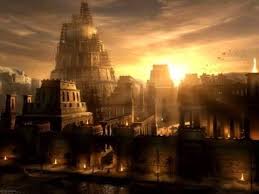Retrocausality and Reality

Retrocausality and Reality
To many a mind time is a imagined spatially.. We assign spatial characteristics to it and tend to take our metaphors at face value By doing so, unfortunately, we may forget that one of the most important ways by which we spatially frame our approach to time – that of direction – may lie at the root of our failure to make more rapid progress in our understanding of this phenomenon. This facet of movement that we call direction easily explains the movement of solid bodies (at least to the human observer) since solid bodies may move in one direction at any given time.
The following was first presented by Cynthia Sue Larson at the twenty-third international conference on the study of shamanism and alternative modes of healing at the Santa Sabina Center, San Rafael, California September 2 – 4, 2006.
INTRODUCTION
Retrocausality, sometimes referred to as ‘backwards time causality’ or ‘reverse time causality’ is defined as the future influencing the past, with effects preceding causes.
This view adopts a symmetrical treatment of time which allows causal movement in two directions, rather than only from past to future. Physicists Stephen Hawking and Thomas Hertog’s concept of a ‘top down cosmology’ views the universe as having begun in every possible way, with the most probable pasts being determined right now.
In contrast with the assumption that time must always flow in one direction from past to future, this new cosmological model depends on the retrocausality idea that effects can precede causes on all levels of reality, not just in the quantum realm.
The ‘double standard fallacy’ of thinking about and treating the past and future differently is but “a projection of our own temporal asymmetry.” [1] One-directional causality leads us to feel hope for the future, but not for the past. Rather than viewing time from a narrowly constrained point of view, theoretical physicists are now adopting the Archimedean ‘view from nowhen’ to better comprehend how two-directional causality easily resolves long-standing paradoxical problems in quantum mechanics. [2]
We find a large body of evidence for retrocausality, from recent research results as well as from thousands of years of anecdotal evidence describing incidents in which cause has followed effect. Through experimental studies we see that people can perceive future events before they occur, as well as influence events that have already occurred in the past. Historical accounts describe how people often experience time-reversed phenomena, such as: precognitive dreams, miraculous spontaneous healings, manifestations, synchronicities, meeting their future selves, and recalling memories of past lives from future times.
Concerns about the possibility of contradictory causal loops, in which it might be possible to undermine one’s own existence if one’s ancestors are harmed, appear to be unfounded.
RETROCAUSALITY THEORIES & EXPERIMENTS
The concept of retrocausality plays a prominent role in developing a unified ‘Theory of Everything’ which describes everything from the largest cosmological bodies to the smallest quantum particles/waves through all time. [3] The concept of retrocausality first sprang into public view following discoveries in the field of quantum physics in the 1940s. Retrocausality was acknowledged as part of the theoretical concept of bi-causality, which appeared necessary in order for the universe to function as elegantly as it tends to operate. [4] Physicists are interested in finding graceful theories that describe space and time consistently and symmetrically, with a minimum of special requirements to accommodate when or where a given mechanism operates. The quest for symmetry was such that eventually physicists noted the long-standing bias toward assuming a one-way arrow of time from past causes to future effects.
One of the strongest objections to backward causation is that it might include ‘paradoxical’ or contradictory causal loops. Such concerns appear unfounded upon closer examination. Oxford philosopher Michael Dummett established logical requirements for a process by which reverse causality could transpire, which philosopher Huw Price amended so that when A causes E, it can be possible to detect whether the event E occurs before the time that event A occurs:
“… what is crucial is not merely that E should be detectable, but that it should be detectable
without disturbing the circumstances under which A is claimed to cause E.” [5]
…to be comtinued
